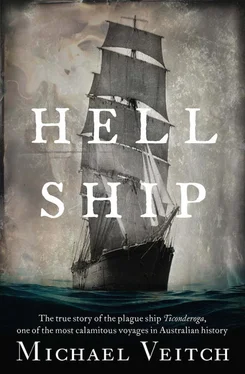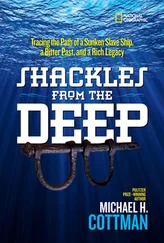The unique and tragic saga of the Highland Scots had begun decades earlier, and ended with the bleak acceptance that life as they had known it had become untenable, and that their only hope of staving off catastrophe for themselves and their children was to forgo their beloved homeland forever. Of all the peoples of Britain leaving their homes in the middle of the nineteenth century, however, it was the Highlanders who had the greatest reason, and yet the least desire, to do so.
In faraway London, the British Home Secretary, Sir George Grey, had, like everyone else, heard stories of the dire plight of the Highlanders but, sceptical of rumours, requested that some person of eminence proceed there and report back first hand. The task fell to Sir John McNeill, Chairman of Scotland’s Board of Supervision, a relief organisation charged with administering the country’s rudimentary Poor Laws. McNeill, a well-connected surgeon and diplomat, toured a number of the most destitute parishes of the Highlands and islands and was appalled by what he saw. The resulting report was harsh and unsympathetic, blaming the Highlanders themselves for their predicament, accusing them of innate laziness, and harbouring an attitude ‘of expecting relief as a right’. [1] Prebble, 1963, p. 201
Its conclusion was blunt, stating that only via emigration could the Highlanders’ complete destitution be averted. With this in mind, in September 1851, a uniquely Scottish charity was established, the Skye Emigration Society. When it became obvious that such poverty as was observed on Skye was in fact endemic throughout the entire Highlands, it assumed the name by which it was to be widely known—the Highland and Island Emigration Society.
Its aim was simple: to induce large numbers of impoverished Highlanders to emigrate, primarily to Australia, and to raise the necessary capital in order for them to do so. However, not so much as a single penny, it was made clear at the outset, would be forthcoming from the government. Operating semi-autonomously under the aegis of the Board, the Highland and Island Emigration Society would concern itself solely with the plight of the Highlanders and be given authority to offer them conditions unavailable to other emigrating Britons. Its coffers, however, would be solely reliant on the generosity of private donors. In stark terms, its co-founder and chairman, the powerful Sir Charles Trevelyan, pointed out the reason for the Society’s existence:
The attention of the benevolent British Public has long been awakened to the lamentable destitution prevailing in the Island of Skye and other overpopulated Highland and Island districts. For five years past a great part of the people of these districts has been supported out of that portion of the munificent subscription raised in the winter of 1846–47, for the relief of the Famine in Ireland and Scotland… This Fund is now exhausted, and the condition of the people remains unimproved. They cannot support themselves in the land of their fathers; and the hardy and loyal Highlander is in danger of being converted into a professional mendicant. There is need of a complete and final remedy. [2] Victorian State Parliament, 1852, ‘Emigration From the Highlands and Islands of Scotland’, p. 3, available from: www.parliament.vic.gov.au/papers/govpub/VPARL1852-53Vol1p855-884.pdf
Glib references to ‘hardy and loyal’ Highlanders aside, Trevelyan himself in fact had no love for the Scots, as he likewise had none for that other great Celtic race in crisis, the Irish. During the recent Great Famine, he had distinguished himself by his slow and recalcitrant delivery of government relief to the Irish population as 90 per cent of their staple food crop, the potato, failed and millions starved to death. A fanatical believer in the sanctity of the free market, he loathed the notion of government assistance of any kind to anyone under any circumstances, and in a letter to an Irish peer went so far as to label the famine ‘an effective mechanism for reducing surplus population’.
Nevertheless, the need for the Society’s services soon outstripped all initial expectations. Luckily, it evolved into something of a charity of fashion, with no less a figure than Prince Albert, husband of the reigning sovereign, Queen Victoria, becoming its patron, and a committee of management which included the Lord Mayor of London, the Governor of the Bank of England and such prominent social reformers as the Earl of Shaftesbury and Baron Lionel de Rothschild.
Highland landowners, no doubt relishing the opportunity to rid themselves of their impoverished tenants, contributed to the fund with uncharacteristic generosity, as did more humble members of the public. A Quartermaster Sergeant Hoban of the 13th Light Infantry contributed just over £4, and Highland soldiers abroad agreed to donate a day’s pay. [3] Prebble, 2003, p. 203
Scots already settled in places like Canada and Australia raised hundreds of pounds for the cause, and the Queen herself contributed £300, with her husband Albert, a renowned kilt-wearer and fancier of all things Scottish, gave £100 to the fund.
It remained, however, a curious charity, offering neither relief nor shelter, food nor employment. The sole reason for the Society’s existence was to deliver, in no uncertain terms, a blunt message to impoverished Highland Scots—‘Go now or starve’ [4] Kruithof, 2002, p. 9
—and to expedite their removal to Australia as effectively as possible.
For those Scots now setting foot on Mr and Mrs Smith’s Birkenhead jetty, their odyssey had begun with an information meeting at a local town or village, at which point the stark reality was laid before them that emigration was their best hope of avoiding destitution. Those charged to conduct such meetings were often shocked at the state of the people seated before them, as they later submitted in a report to the Society’s chairman. As Mr Thomas Fraser, the Sheriff Substitute (a local judge) of the Isle of Skye and one of the architects of the Society, commented:
At our meeting yesterday, so many of the poor intending emigrants attended, all anxious for some information as to their prospects of getting away, that my court-room could not hold them, and we had to adjourn to the parish church. Many of these people are in a state bordering on starvation; and I have seldom had a more painful duty to perform than to address them without being able to give them any distinct information on the matter, which to them in their present circumstances is one of such frightful interest. [5] Victorian Parliamentary Papers 1852/53O
The Reverend James McQueen observed:
The state of the people in general is most alarming. There never has been anything like the present distress. I can hardly describe my feelings, seeing and hearing their lamentable complaints, and seeing my fellow-creatures weeping before me, when I cannot help them. May God have mercy on them! I know not what will become of them. [6] Victorian State Parliament, 1852, ‘Emigration From the Highlands and Islands of Scotland’, p. 11
To the Scots, the Society offered a one-off, never-to-be-repeated opportunity of a heavily subsidised sea passage with terms far more generous than those proffered to the Irish or even the English in the care of the Board. There was still some cost involved, though, as well as a rigorous selection process, and by no means all who applied were successful. Applicants were required to possess rudimentary literacy (though often they did not), be relatively young, be unafraid of hard work and, importantly, display no yearning whatever to return to the mother country.
As an encouragement for this last point, they were required to sell everything they owned except the several sets of clothes they were told would be needed on the voyage. They also needed letters of reference from a minister of religion or a medical doctor attesting them to be of good character and—in an age before universal documentation—that they were in fact who they claimed to be.
Читать дальше












